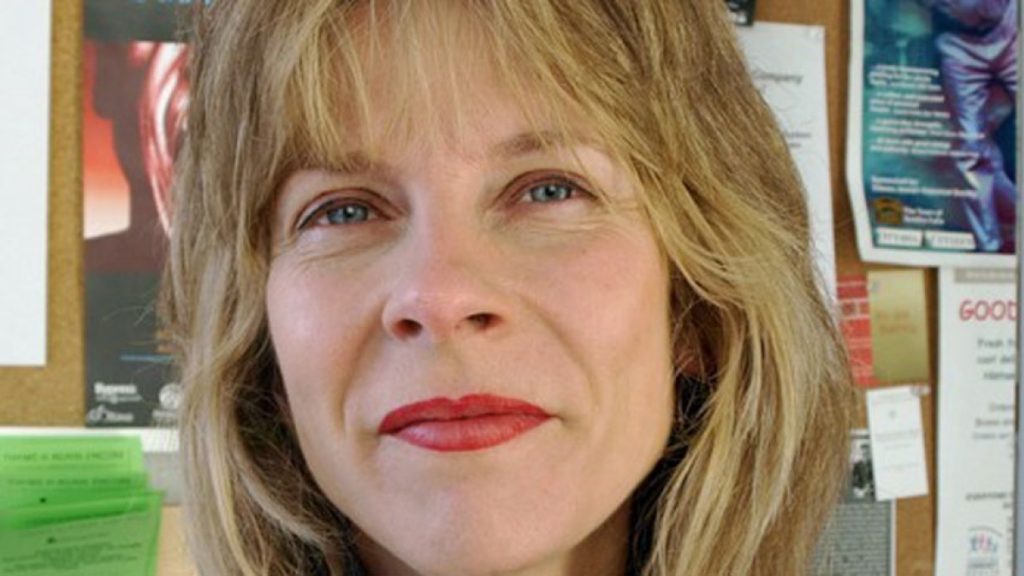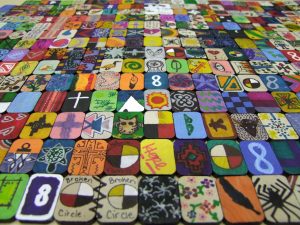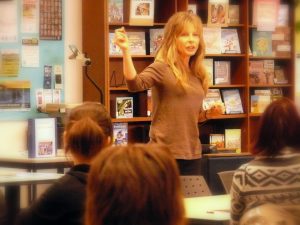
Typically, our Teacher-Researcher story features teachers who have completed their M.Ed. programs, having successfully defended their theses. However, one of the realities of educational journeys, especially for adult learners, is that they are often disrupted by life and circumstance. The following is an interview with Ottawa teacher and U of R grad student, Sylvia Smith, whose academic journey has been disrupted mostly because of a grad student project that has been taken up nationally: the Project of Heart. In fact, Smith won the Governor General’s History Award for Excellence in Teaching in 2011 because of this project.
1. Why did you choose to do your graduate degree at the Faculty of Education, University of Regina? (especially given your location in Ottawa.)
At the time, my mom and dad were still alive and I had family in Saskatchewan. My family went there every summer to visit. Since I was a teacher and had summers off, it seemed like a fruitful way to combine my interest in graduate work as well as to keep the family connection going.
2. How would you describe your experience as a student at the U of R?
I have had nothing but GREAT experiences as a student at the U of R! Our second daughter was quite young and needed childcare when I started my course work in 2007, and we were able to enroll her in the summer programs that were held right at the University…in the gym in fact! So it was a very stress-free endeavour! We (myself, my partner and daughter) stayed in the residence there, had the childcare taken care of, and I was free to attend my courses!
3. While studying with us, you developed the Project of Heart. Briefly outline what a Project of Heart looks like.
Initially Project of Heart (POH) had five distinct parts, and now it has six. Part 1 dealt with learning about the Indian Residential Schools (IRS), why they were created, how many there were, what the conditions were like for the students, and so on. Because there were virtually no resources for teaching about the IRS at the time, materials donated by Legacy of Hope (LOH) filled the kits. With respect to the loss of life and deaths due to the IRS, I relied on primary source documents that I got from visiting Library and Archives Canada. The primary source documents were ways for the students to see that these children actually existed and that they never stopped resisting attempts to make their lives better, even if it meant fleeing the schools and many of them, dying while trying. These primary source documents brought the horrors of so many of these schools to life!
Part 2 is where the students choose a particular Indian Residential School and then learn something about the Nation on whose land that School stood, and their contributions to Canadian society. The facilitator or teacher can proceed with doing this part in whatever way that best meets the learners’ needs. Often, it is the first time that students find out the name of the Original Peoples of the territory that they’re living on. What students find out after doing this part, is that no matter how hard the Canadian Government tried to “kill the Indian within the child,” they were not successful. Students are able to see—and feel—that Indigenous peoples and their cultures must be incredibly resilient to have survived an onslaught that started 500 years ago and continues to this day.
Part 3 is the first gesture of reconciliation. It is the part where students take what information they’ve gleaned from doing Parts 1 and 2, and use their skill/talent at communicating, through art, their feelings. They may feel sadness, anger, or they may not even know how to feel. They may feel hope, especially after finding out that Indigenous people are not a dying race—that there are many who are devoted to rebuilding their communities and relearning their languages…and know that there is a place for them in today’s society. But whatever it is they are feeling, they communicate it through art. They decorate a small wooden tile, each tile symbolically representative of the life of one child who died. This child’s memory is brought back to life.
Part 4 is where an Indian Residential School survivor (or a cultural worker or an IRS intergenerational survivor, or an Elder) comes to the school (or church or business) and answers questions, gives a teaching, or just talks to the students about life. Normally, if it’s a survivor, she will answer questions from the group. This is where the lived experiential knowledge is transmitted to the learners.
Part 5 is the social justice piece, the second gesture of reconciliation where settlers who are doing this project, “walk the talk.” This part is missing from most government promises. Our Canadian Government, under the leadership of Mr. Harper, said we were sorry. But we didn’t mean it, because there were NO actions undertaken that would prove that we (as a country) were sorry. Project of Heart provides a way for its learners to truly enact our citizenship responsibilities, putting empathy into action, in a respectful way. (We want to build trust. We want to walk with, not over, Aboriginal people.) It demonstrates to Indigenous people that non-Aboriginals are prepared to act in support of their resistance struggles, whether it be for justice for the horrific number of Indigenous women and girls who have gone missing or murdered, or the over-the-top numbers of Aboriginal kids who are in state care through various ministries of child and social services.
Part 6 is a relatively recent addition. It was instituted after the TRC National Event in Saskatchewan while under the care of Charlene Bearhead. One of the teachers in Saskatoon Catholic Board, Lynette Brossart, and her students, who had completed Project of Heart, were invited to come to the National Event. Lynette was very concerned to find out that there were IRS Survivors there who had never heard of Project of Heart and felt the need to do something about it. She came up with the idea of the learner groups making cards for the survivors. With this step, when there are events that Survivors are attending, they could be given a card with one Project of Heart tile attached to it, that would let them know that the learners cared about them, and that they were learning about their situation so that this would never happen again. It worked! Project of Heart had now come full circle.
4. What were the circumstances that led you to develop the Project of Heart?
There were a few ‘circumstances’ that led to the development of the project, but the easiest to explain is the fact that I couldn’t justify to my Grade 10 students why such a major part of our history was invisible. Young people will challenge their teachers if something doesn’t make sense, and in the only mandatory history course there is in Ontario high schools (contemporary Canadian History), there was a huge, absolutely gaping void. When a particularly inquiring student, Andrea, was finding evidence in her research that was creating a cognitive dissonance for her (it was the number of students that had perished while at the schools) she would not give up trying to figure out why this egregious part of history was so neglected. I had no choice but to be gently led by her curiosity, fast-becoming-anger. Our textbook dedicated two paragraphs (63 words) to the IRS era. Andrea couldn’t believe it, and I couldn’t either. So between her righteous anger and my integrity on the line as a history teacher, we decided that if the textbook couldn’t tell us the truth, we would find it and learn it on our own! And not only that, but also we’d help others whom we knew were as ignorant, maybe even more-so, than we were! So Andrea got to work, continuing her research and at the same time, building contacts in both the Aboriginal and settler community that could help her and her classmates make sense of their past. They all felt betrayed. They had grown up proud to be Canadian, and now that identity was being challenged in a major way.
In a nutshell, there were a lot of relationships made, guest speakers invited, (IRS survivors in the community), and activists who supported the students in this educational endeavour right from the start. The students did what was within their capability to do (write proposals so we could get some money to buy the wooden tiles, and pay honouraria for Aboriginal guests to come and talk to us) and I did my part. Project of Heart began with the first ceremony to honour the children who had died.
This is where the U of R comes into the story: While the students were busy making poster boards, learning, and going class-to-class to invite students in other rooms to participate in their teach-ins and guest speakers, I was taking Dr. Spooner’s Social Justice course. I Skyped into the evening class once per week from Ottawa (I was the box-head that spoke through a TV)!
The first Truth and Reconciliation Commission had been struck, and there was a call for proposals to do “Commemorative Projects.” I thought, “Why not? Let’s do what we’re doing in the class already, and just formalize it?” I decided to ask permission to do a Project of Heart proposal in place of the essay assignment for the class: putting what we were doing, and the purpose for what we were doing on paper was the only thing that was missing. Articulating the project would allow other groups to join the effort.
Dr. Spooner accepted the proposal as my project, and Project of Heart became formalized: It was envisioned, and its parts fully explained. Supporters came through to help us build the teaching module. The Canadian Union of Postal Workers supplied all the boxes, free of charge. The Legacy of Hope Foundation gifted us with thousands of dollars worth of resources with which we would fill the kits. I would purchase the small tiles and fill the kit with a pre-arranged number. And perhaps the most important thing—cost—I wanted potential users to know that they could experience this transformative learning, for less than the cost of textbook. The only caveat was that their heart had to be in it, and they had to be willing to engage the Indigenous community. Project of Heart would only work if it was centered on Indigenous people and their experiences.
So, it is these resources that I sent out to any learner group who wanted them. It was truly a labour of love. My partner created the website (www.projectofheart.ca) where groups who do the project could upload pictures and a report on their experiences doing Project of Heart. This part was essential because as schools and other learner groups reported on their experiences, they gave ideas and inspiration to other groups. I insured that faciliator directions were packed in the boxes and that an inventory of what was included in the kit was included.
5. Has the POH made it difficult for you to finish your M.Ed. studies?
Yes, doing POH has made it difficult to finish my M.Ed. I started my thesis work in 2011. I was interested in finding out what teachers’ perceptions were of doing Project of Heart. I had done all the interviews and when the tough work began, we had an illness in the family and I too became very over-stressed. My work suffered. And the longer one leaves the work, the more difficult it is to come back to it. I’m also older, and don’t have as much energy as I used to have. But I am trying to complete it before next spring. In the interim, the landscape has changed so much. When I’d started, materials on Indian Residential Schools were almost nil. Now there are lots! And POH has grown exponentially! So what was supposed to be “snapshot in time” has now become much more, and figuring out how it’s all going to come together is challenging.
___________________________________________________________
If you are teaching in Saskatchewan and interested in doing a Project of Heart with your class check out the Saskatchewan Project of Heart website: www.projectofheart.ca/sk Let us know if you are doing a Project of Heart so we can add a report to the site. (shuana.niessen@uregina.ca)